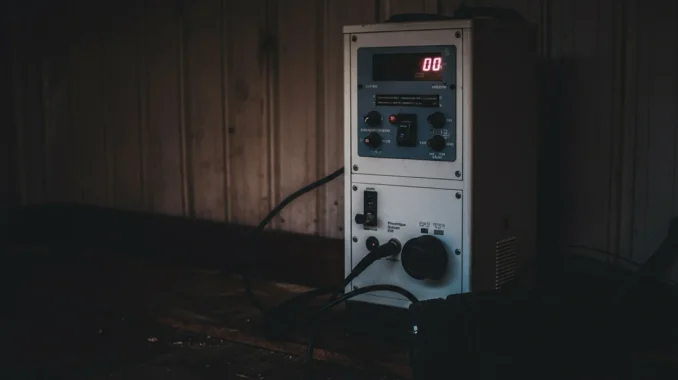In times of war, supply chain disruptions, or economic collapse, fuel shortages can become a major problem. Having a safe, long-term fuel storage system ensures that you can power vehicles, generators, and heating systems when fuel is no longer easily available. However, improper fuel storage can be extremely dangerous, leading to fire hazards, toxic fumes, and environmental contamination.
Many emergencies, such as conflict-related fuel rationing, extreme weather conditions, or infrastructure breakdowns, can make access to fuel nearly impossible. In some cases, fuel prices skyrocket, making it difficult to afford. Storing fuel properly gives you a sense of independence and allows you to remain self-sufficient during uncertain times. This is especially important for people in rural areas, conflict zones, or off-grid locations, where fuel access is unreliable.

This guide will teach you how to safely store fuel for emergency use, covering storage methods, safety precautions, fuel lifespan, and what to avoid to ensure that you can access fuel when you need it most.
Step 1: Understanding Different Fuel Types
Not all fuels store the same way. Some degrade over time, while others are more hazardous in enclosed spaces. Choosing the right fuel and storage method is crucial.
1. Gasoline (Petrol)
Gasoline is one of the most commonly used fuels, but it also has one of the shortest shelf lives. Over time, gasoline degrades due to oxidation and evaporation of volatile components.
- Lifespan: 3-6 months (without stabilizers); up to 2 years (with stabilizers)
- Best Containers: Metal or plastic fuel cans rated for gasoline storage
- Risks: Highly flammable, emits toxic fumes, evaporates quickly if not sealed properly
- Use: Vehicles, portable generators, some heating appliances
Storage Tips:
- Always add a fuel stabilizer if storing gasoline for more than 3 months. This prevents degradation and gum buildup in engines.
- Use metal containers for long-term storage, as plastic containers can degrade over time due to exposure to gasoline fumes.
- Store gasoline away from direct sunlight and heat sources, as increased temperatures can cause pressure buildup and increase the risk of explosion.
- Label all gasoline containers clearly and store them upright and tightly sealed to prevent leaks and evaporation.
2. Diesel
Diesel fuel is more stable than gasoline, but it still degrades over time, especially when exposed to moisture, which can lead to microbial growth.
- Lifespan: 6-12 months; up to 2-3 years with fuel stabilizers
- Best Containers: Metal or high-density polyethylene (HDPE) plastic containers
- Risks: Less flammable than gasoline but can become contaminated with bacteria or water
- Use: Trucks, agricultural machinery, home generators
Storage Tips:
- Check for water contamination regularly. Diesel absorbs moisture from the air, which can lead to microbial growth. Using a diesel biocide can help prevent bacterial contamination.
- Keep diesel tanks full to reduce condensation and minimize water buildup inside the tank.
- Store diesel in a cool, dark location to slow down oxidation and extend shelf life.
- Use a fuel stabilizer and anti-gel additive if storing diesel in cold climates to prevent fuel thickening.
3. Kerosene
Kerosene is a versatile fuel that lasts longer than gasoline and diesel when stored properly.
- Lifespan: 5-10 years if stored properly
- Best Containers: Approved blue plastic kerosene containers
- Risks: Produces harmful fumes when burned in unventilated areas
- Use: Heating systems, lanterns, some cooking appliances
Storage Tips:
- Use only kerosene-rated containers—other containers can degrade or leach chemicals into the fuel.
- Keep kerosene away from direct sunlight, as UV exposure can degrade the fuel quality.
- Rotate stored kerosene every 2-3 years to ensure effectiveness and avoid contamination.
4. Propane
Propane is one of the best fuels for long-term storage because it does not degrade over time like liquid fuels.
- Lifespan: Indefinite (does not degrade over time)
- Best Containers: Propane cylinders or tanks
- Risks: Can leak if not stored properly, creating an explosion hazard
- Use: Cooking, heating, generators, some vehicles
Storage Tips:
- Always store propane cylinders in a well-ventilated area outdoors to prevent gas buildup in case of a leak.
- Check propane tanks regularly for leaks using soapy water—if bubbles form, there is a leak.
- Never store propane indoors, in basements, or enclosed spaces due to the risk of gas accumulation.
- If using large propane tanks, follow local regulations on placement distances from buildings and ignition sources.
5. Firewood and Coal (Alternative Solid Fuels)
For those who rely on traditional heating methods, storing firewood and coal is an essential backup plan.
- Lifespan: Indefinite if kept dry
- Best Storage Method: Covered, ventilated, and dry storage area
- Risks: Mold and pests if stored improperly; potential fire hazard
- Use: Heating, cooking
Storage Tips:
- Store firewood off the ground and covered, but allow for airflow to prevent mold growth.
- Keep coal in waterproof containers to prevent it from absorbing moisture, which can make it harder to burn.
- Never store firewood or coal indoors in large quantities—this can lead to mold, pests, or fire hazards.
- Rotate firewood stock to ensure the driest wood is used first.
Step 2: Choosing the Right Storage Containers
1. Approved Fuel Storage Containers
Fuel must always be stored in government-approved containers designed for flammable liquids. Using the wrong container can result in:
- Chemical breakdown—plastic or metal containers not meant for fuel storage may corrode or leak.
- Explosion risk—some containers may not withstand pressure buildup.
- Toxic contamination—if the fuel reacts with the container material.
2. Proper Sealing and Labeling
- Ensure all containers are tightly sealed to prevent evaporation or leaks.
- Label each container clearly with the type of fuel, date of purchase, and expiration date.
- Keep an inventory list of all stored fuels so you can track expiration dates and use them before degradation.
3. Size Considerations
- Smaller portable containers (5-10 liters) are useful for daily or short-term needs, such as refueling a vehicle or generator.
- Larger tanks (100+ liters) are better for long-term emergency fuel storage, but they require extra security and maintenance.
- Never store more fuel than necessary—excess storage increases risks, especially in confined spaces.
Conclusion: Safe Storage Ensures Survival
Proper fuel storage can make the difference between survival and disaster during an emergency. Whether you’re preparing for war, power outages, supply disruptions, or survival situations, safe fuel management is crucial.
By following these safety measures, you ensure that your stored fuel remains usable, secure, and safe for emergency situations.




